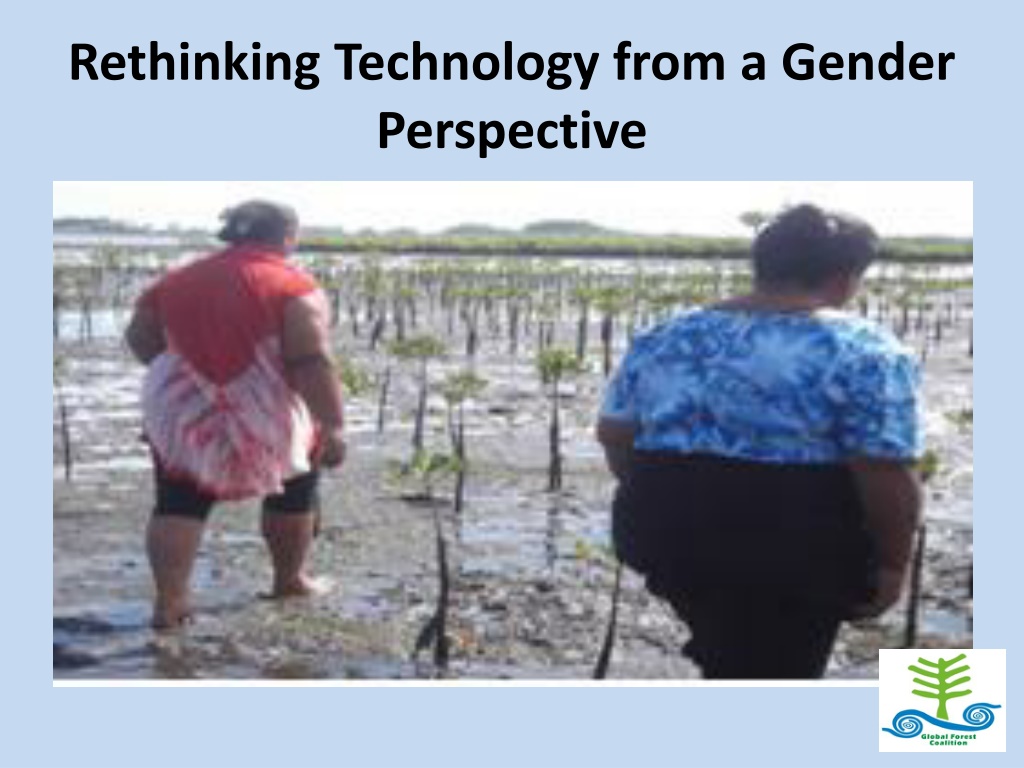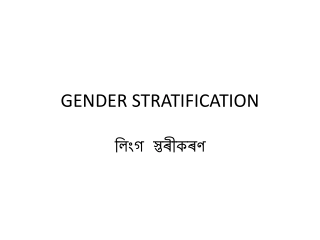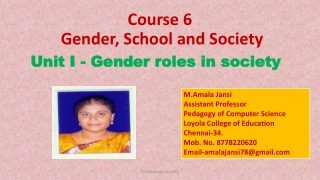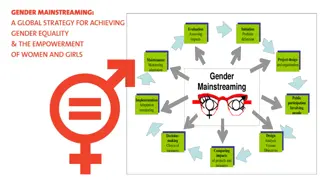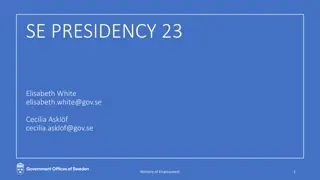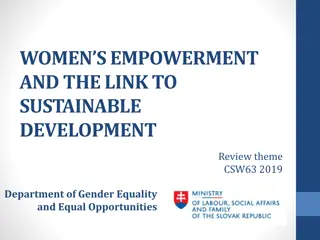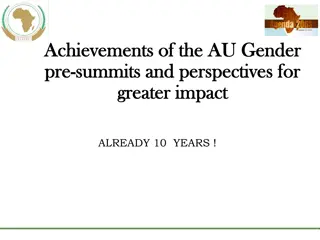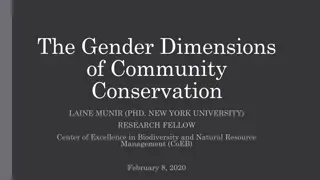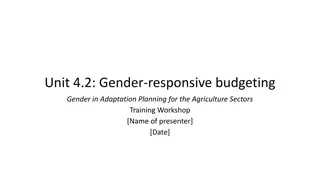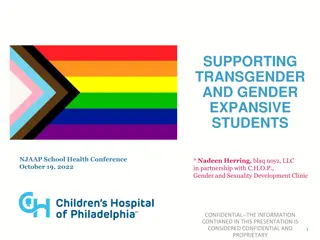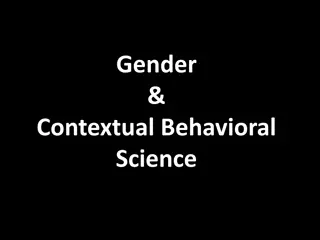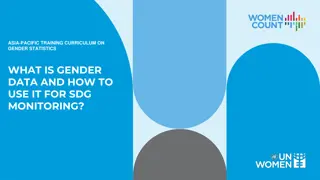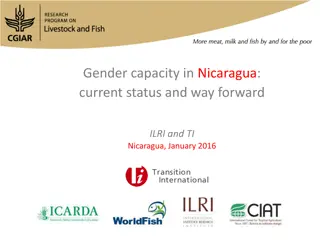Gender Perspectives in Technology Development
Rethink technology development from a gender perspective to ensure inclusive and sustainable progress. Financing for development and post-2015 agendas must align and address systemic issues. Emphasize non-financial means with a rights-based approach, capacity-building, and local innovation. Prioritize socially, economically, and environmentally sound technologies, including indigenous knowledge. Foster gender-sensitive science and technology education to recognize diverse contributions.
- Gender perspectives
- Technology development
- Financing for development
- Sustainable innovation
- Indigenous knowledge
Download Presentation

Please find below an Image/Link to download the presentation.
The content on the website is provided AS IS for your information and personal use only. It may not be sold, licensed, or shared on other websites without obtaining consent from the author. Download presentation by click this link. If you encounter any issues during the download, it is possible that the publisher has removed the file from their server.
E N D
Presentation Transcript
Rethinking Technology from a Gender Perspective
Financing for Development and the post-2015 development agenda Two distinct processes with different histories and objectives That should lead to coherent and complementary outcomes Key principles: Non-regression and common but differentiated responsibilities FfD should address the systemic issues in international financial governance that could undermine implementation of the SDGs The post-2015 development agenda should include both financial and non-financial Means of Implementation
Non-financial Means of Implementation A strong human rights-based regulatory and institutional framework Capacity-building Technology and innovation, including new and traditional technologies, innovations and knowledge held by Indigenous peoples, women and local communities Collective actions, including ICCAs and other community initiatives for sustainable livelihoods
Not just any technology MOI on technology should facilitate the deployment of locally-appropriate, environmentally sound and proven technology, innovation, knowledge and practices that contribute to all SDGs. Coherence with broader agenda is key. Environmentally sound is a criteria, not the sole objective. But they should also be socially and economically sound. Technology needs to be monitored and profoundly assessed prior to any transfer or divulgation. The main task of facilitation mechanism would be to ensure monitoring and multi-stakeholder assessment of impacts of potential technologies for sustainable development, based on robust criteria and indicators.
Foster the sustainable technologies and knowledge we have Give equal recognition to the contributions of formal innovations and traditional knowledge systems. Science and technology education must be gender- sensitive, hurdle gender stereotypes and recognize the contribution of traditional knowledge systems. The role of women, especially the youth, as technology producers, innovators, entrepreneurs and knowledge holders must be mainstreamed and supported. Local innovations, indigenous knowledge and endogenous technologies that are mostly held by women must be scaled out, taking into account the recognition and protection of community rights over traditional knowledge systems as embodied in international instruments.
Indigenous peoples and local community conserved territories and areas (ICCAs)
An indigenous people or local community takes, de jure or de facto, the main management decisions regarding its territory, area and natural resources resulting in conservation and restoration ICCA coverage is estimated to be larger than governments protected areas (12 22 % of terrestrial surface) Increasing evidence ICCAs are more effective than protected areas ICCAs are the basis of livelihoods for millions of people, securing resources (energy, food, water, fodder) and income
Promoting Community Conservation Resilience: a psychology of solutions (e.g. MoI 15.c.2) Shimshal Community Conserved Area, Pakistan Gunba sacred hill, Nagela(China) Setulang river, Indonesia Community forest, Costa Rica Walalkara Indigenous PA, Australia
. Sacred crocodile pond, Mali Prey Thom in Phnom Kulen National Park, Cambodia Sacred lake, Indian Himalaya Forole sacred mountain Borana/ Gabbra Ethiopia/ Kenya
MOIs should recognize, respect, foster, and provide appropriate support, including legal, economic, social, cultural and moral incentives, to all environmentally and socially sound technologies, innovations, knowledge and practices that could contribute to sustainable development, including through revolutionary ideas
